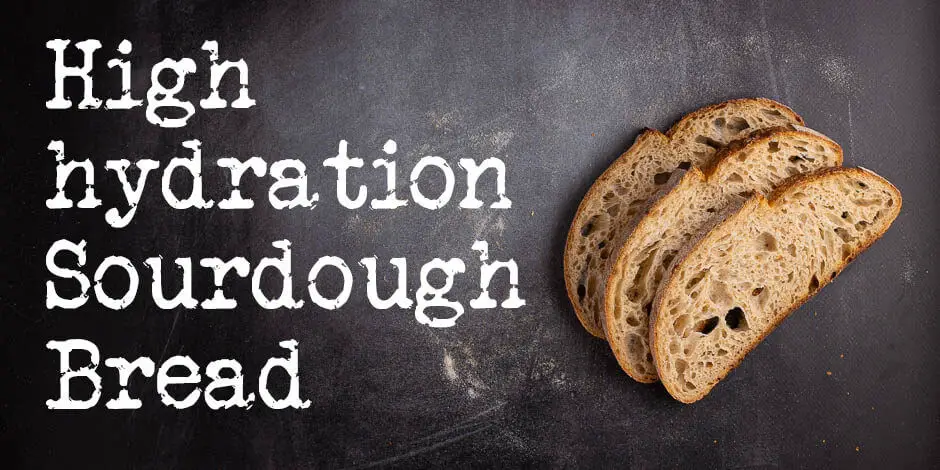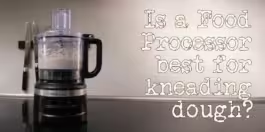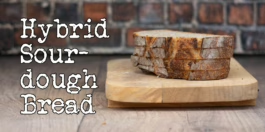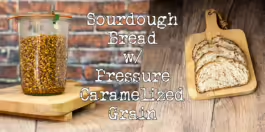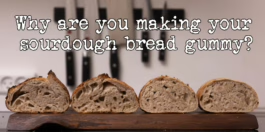Making sourdough bread is really the talk of the town, and it seems like what everybody is lusting after is the high-hydration sourdough bread. The problem is that when you up the hydration, you get a soupy dough. Then you try to up the whole grain content, but then you lose the strength of the gluten. The answer to your problems is using a tangzhong. This is my recipe for a high-hydration sourdough bread using a tangzhong.
To make this bread, you will need an active sourdough starter. If you don’t have one, you can follow my method, which is super simple.
This bread, while much easier than your garden variety high hydration sourdough bread, is not for beginners.
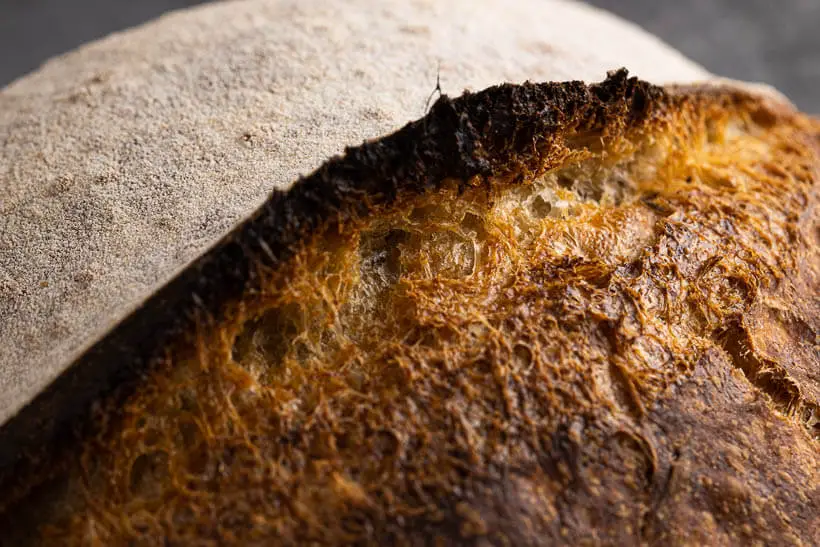
If you are new to the world of sourdough bread baking, I recommend reading my article ‘Master Recipe‘, which explains all the techniques and what you need to know to get started in the sourdough world.
If you are just here for the recipe, you can press the button underneath to be automagically transported to the recipe:
Jump to Recipe Jump to VideoWhat’s a tangzhong?
Science Alert! This section will contain some scientific wordings and explanations. If that is not your cup of tea, jump ahead to the next section.
A roux is normally equal parts flour and fat cooked together to form a thickening agent used to thicken sauces.
A tangzhong is a roux made using flour and water and is commonly mixed in the proportions of 1 part flour to 5 parts water.
Where does it come from?
The tangzhong method originates from Japan but what popularized by Chinese writer Yvonne Chen in the 1990s with her book The 65° Bread Doctor.
The book was never translated into English, but the method has since gained a lot of traction all over the world.
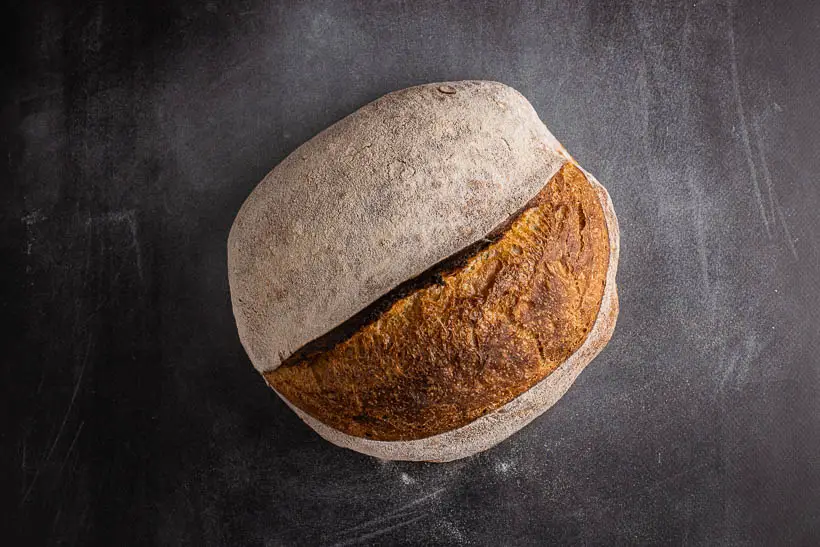
How do you make a tangzhong, then?
After mixing the flour and water, the mixture is cooked to 65°C/149°F. This gelatinizes the starches in the flour.
This helps the moisture to be encapsulated in the starch molecules.
Harold McGee writes in his excellent On food and cooking:
During the baking of bread and cakes, the starch granules absorb water, swell, and set to form the rigid bulk of the walls that surround the bubbles of carbon dioxide. At the same time their swollen rigidity stops the expansion of the bubbles and so forces the water vapor inside to pop the bubbles and escape, turning the foam of separate bubbles into a continuous spongy network of connected holes. If this didn’t happen, then at the end of baking the cooling water vapor would contract and cause the bread or cake to collapse.
The formula of this high-hydration sourdough bread recipe
The dough is made with about 20% whole-grain wheat flour. I mostly do that with my bread recipes to add some extra flavor and texture.
The tangzhong percentage is 20% of the weight of the entire dough. That can be taken up to about 40%, which I will probably experiment with to see what difference it makes.
| Weight | Ingredient | Baker's Percentage |
|---|---|---|
| 546g | bread flour | 70.8% |
| 172g | whole-grain wheat flour | 22.3% |
| 377g | water | 48.9% |
| 16g | salt | 2.1% |
| 53g | Tangzhong Flour | 6.9% |
| 266g | Tangzhong Water | 34.5% |
If you want to play around with the formula, you can do that with my bread calculator. If you want the formula before conversion to tangzhong so you can change the tangzhong amount, it can be done using this formula.
The conclusion of this high-hydration sourdough bread recipe
‘Tis not a lie. Gelatinizing part of your flour helps you with much more manageable dough, even at very high hydrations.
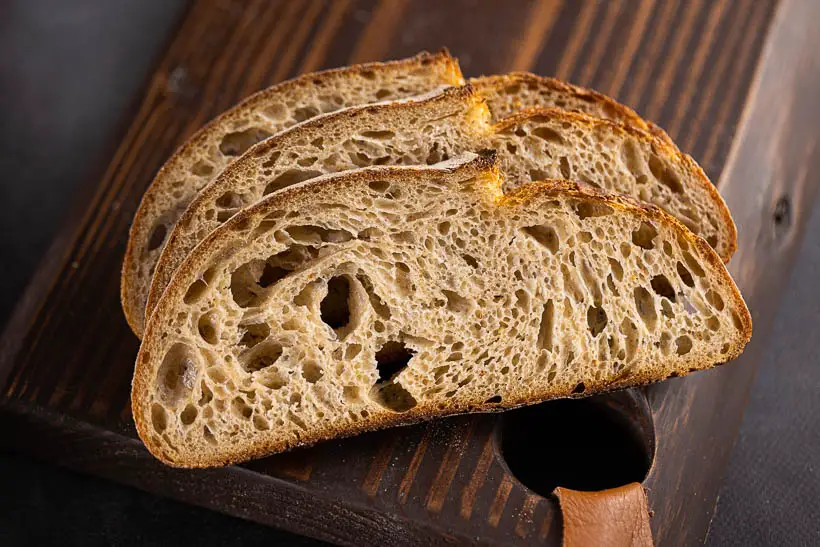
The resulting bread is wonderful. Open crumb, crispy crust, great oven spring, intoxicating smell, and a wonderful taste.
It’s not the last time I will use this method to make my sourdough bread.
Please share on social media
This is my recipe for high-hydration sourdough bread using the tangzhong method. I hope you will try to make it, because it’s awesome.
If you make it and post it on Instagram, please tag me as @foodgeek.dk so I can see it. That would make me very happy.
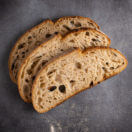
Tangzhong Sourdough Bread
Ingredients
Tangzhong
- 53 g bread flour
- 266 g water
Dough
- 546 g bread flour
- 172 g whole wheat flour
- 377 g water
- 170 g sourdough starter fed and grown to its peak
- 16 g salt
Instructions
Make tangzhong
- Mix 53g bread flour and 266g water using a whisk.
- Microwave on high until the mixture is above 65°C/149°F. It took about 1½ minute in my 1000W microwave.
- Mix again using a whisk and leave to at least 30°C/86°F.
Mix the dough
- Mix all the dough ingredients until all of the flour is hydrated.
- Let the dough rest covered for 1 hour.
Bulk fermentation
- Start the bulk fermentation with three sets of coil folds every 30 minutes.
- To do a coil fold do the following:
- Wet your hands.
- Loosen the dough carefully from the bowl. You probably only need to do that the first time.
- Put two fingers in from each side of the dough.
- Lift the dough so that the part of the dough facing away from you is loosened.
- Flip that part of the dough underneath the dough.
- Flip the bowl 180°.
- Lift the dough again and flip the other end of the dough underneath.
- Now turn the bowl 90°.
- Repeat the steps from above.
- Let the dough rest for 30 minutes under a damp dishtowel.
- After the 3rd coil fold, you should check the gluten development by doing a windowpane test.
- If it's still not strong, add more coil folds as needed.
- When done with this part, add the dough to a bulking container with straight sides.
- Mark the top of the dough on the container with a whiteboard marker.
- Let it grow 50% covered somewhere warm.
Divide and preshape
- When the dough has fermented and seems fluffy, light, and airy, you should divide and preshape the dough.
- Divide the dough in half using a bench scraper.
- Preshape the dough by making a ball.
- Pull out the side of the dough ball and fold it over the top of the dough; continue doing the same from each side, so you've done it from the top, bottom, left, and right.
- Flip the dough over using your bench scraper.
- Put the scraper behind the dough and pull it towards you to pull the front underneath it, thus tightening the top.
- Once you can't get any further, place the scraper in front of the dough and push it across the table, making a twisting motion at the end, so the scraper ends up behind the dough.
- Repeat a few more times until you have an approximate ball.
- Repeat for the other dough ball.
- Rest for 20 minutes on the kitchen counter
Shaping
- We're baking these loaves as batards, also known as cigar-shaped or oval loaves.
- Flour two oval bannetons with a generous amount of rice flour.
- To shape the dough do the following: Flour your kitchen counter lightly, then flip a dough ball onto the flour.
- Tease it into a rectangle using your fingers.
- Pull out one side and fold it over the dough above halfway, Pull out the other side and cover the other flap.
- Then roll the dough up pretty tightly from the short end. I usually pull and press down with my pinkies. You should end up with the stitch of the loaf being down towards the table. Watch the video on how to do it.
- You will have an oval loaf but with rolls on the sides. Cover the rolls put pull the dough down over the roll on each side. Flip the dough into a banneton so that the stitch is upwards. Repeat for the other bread.
- Put both bannetons in the fridge to retard until you want to bake. At least 8 hours, but up to 48 should be fine if your fridge is very cold.
Baking the bread
- Put a dutch oven or combo cooker in the oven. Heat your oven to 230°C/450°F/Gas mark 8 for 30 minutes.
- Grab a banneton from the fridge, dust the bottom with rice flour and flip it onto a peel. You can add more rice flour to the top, depending on the desired look
- Score the bread using a super sharp lame. For this one, I usually do an ear.
- Hold the lame at a 45° angle, and cut swiftly and decisively from one end of the bread to the other; it should be about a 45° angle on the bread.
- Don't be afraid to slice more than once to make the score deeper as needed. Bake the bread with the lid on for 20 minutes.
- Remove the lid and bake for 20-25 minutes until the bread is super crispy and deeply caramelized.
- Take the bread out and let it cool on a wire rack. Bake the other bread the same way.
- Let them come down to room temperature until you cut into them.



